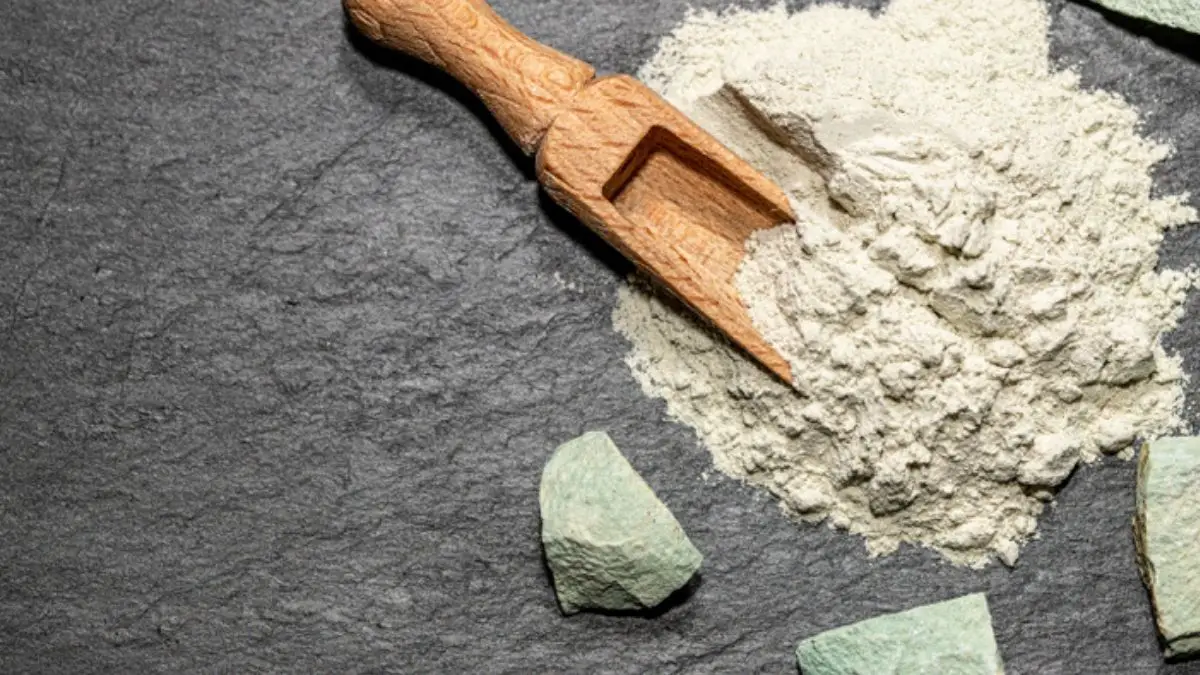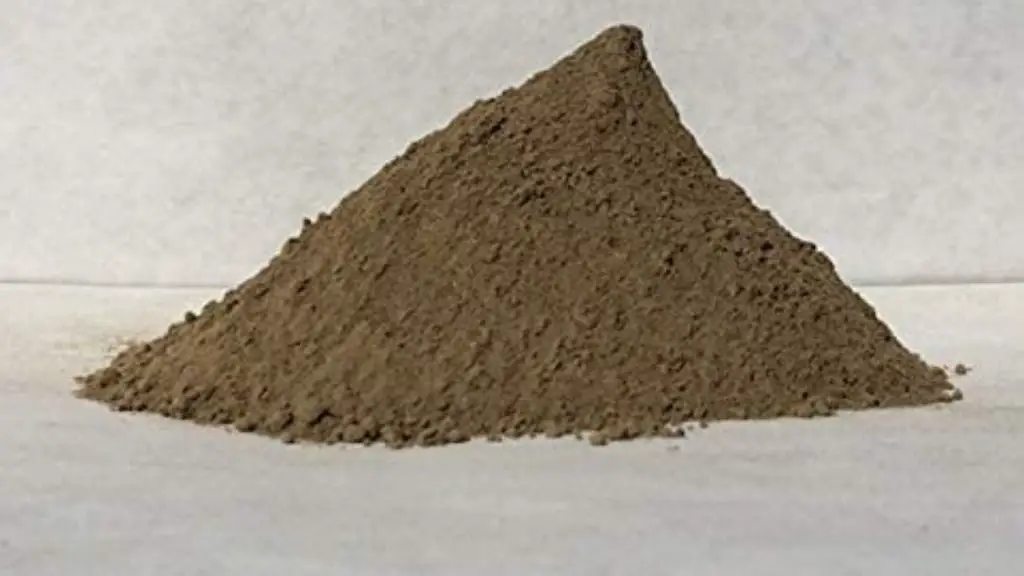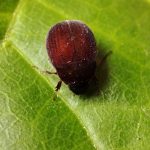Want to Know How Much Rock Dust to Use? (A Complete Guide)

Rock dust is also known as soil remineralizer, rock powder, rock flour, and stone dust. It is a finely crushed rock particle or soil amendment containing essential micronutrients and trace elements. Due to this, rock dust is added to improve soil health and decrease soil nutrient deficiency. For this, carry out the application carefully according to the recommendations if you want any positive results.
So How Much Rock Dust to Use? Also, how to use rock dust? Don’t worry, you don’t have to go anywhere to get answers as we are describing everything in detail here!
- As a Bonus, there is a FAQs section to answer the most asked questions related to this subject.
Let’s start the article with the benefits any rock dust provides!
Advantages of Rock Dust (What is rock dust used for)
People ask, does rock dust really work and the answer is Yes! To know what they do, check out their advantages:
1) Applying rock dust to soil provides essential micronutrients and trace elements. Plants not only require macronutrients but also micronutrients and trace elements to grow to their full potential.
2) Rock dust Increases the cation exchange capacity (CEC) of the soil.
3) Adding Rockdust into compost significantly improves nutrient availability. In compost, organic matter decays to provide the essential minerals. If you add rock dust fine particles into the compost, the organic matter & humic acid in the soil will increase.
Decaying Organic matter in compost provides macronutrients (Nitrogen, Phosphorous, and Potassium) while rock dust provides micronutrients and trace elements.
It also increases the activities of beneficial microbes in the soil. Thus, it is a perfect package that has both environmental and economical advantages. This compost-rock dust mixture does not harm the environment and you don’t have to buy expensive chemical fertilizers after applying it.
4) Plant burn does not happen even if you over-apply the rock dust. But applying more than recommended quantity won’t do any good for the soil or for plants. You know that rock dust supplies micronutrients and trace elements. There is a reason why the words like micro or trace are used. These nutrients are required by plants in small amounts and rock dust provides these. So, there is no need to over-apply.
Primary Sources of Rock Dust
There are many rock dust sources, but which one you should use? Well, every rock dust source is different as they have different nutrients in different ratios.
To determine what rock dust source should be added to the soil, do a soil test. Check which nutrients your soil lack and then choose that rock dust containing that mineral.
Generally, rock dust is made up of:
- Glacial Rock dust
- Azomite
- Basalt Rock dust
Glacial Rock Dust
When the ice breaks off from the top of mountains and rolls down, it picks up some of the rocks on the way. When this ice melts, you will end up with glacial rock dust.
Glacial Rock Dust is rich in calcium, iron, magnesium, and potassium. So, add this dust when the soil lacks these minerals. This rock dust also contains silicon, cobalt, manganese, and other small amounts. Thus, witness surprisingly high crop yields after adding Glacial Rock dust.

Azomite
Azomite is an acronym and its full form is A to Z Of Minerals Including Trace Elements. It is formed when the volcano spits out ash millions of years ago into the nearby sea and then this ash dries out to form the Azomite rock.
Azomite contains potassium, magnesium, silica, and more than 70 trace minerals. When plant roots uptake them, robust growth is certain!

Basal Rock Salt
Basal Rock is made up of volcanic rock or volcanic soil. When you mine basalt, the byproduct you get basal rock salt. Generally, Basal is mined to get the rocks for construction and industrial purposes. When the basal is crushed, sometimes instead of getting smaller rocks, you end up with powder. It is this powder that is the basal rock dust or salt. Due to this crushing, basalt is considered the most eco-friendly.
This volcanic rock dust contains calcium, magnesium, manganese, iron, cobalt, zinc, aluminum, and boron which improves soil fertility.
Moreover, many gardeners prefer basalt instead of glacial rock dust or Azomite. Why? Because the chances of heavy metal contamination are less than the other two.

Comparison between Glacial, Azomite, and Basal Rock Salt
People often compare glacial rock dust vs Azomite, or basalt rock dust vs Azomite. Well, here is the comparison table of these three soil amendments to further understand the differences between them.
| Minerals | Glacial Rock dust | Azomite | Basalt Rock Salt |
| Potassium | Yes | 0.2 | – |
| Magnesium | 0.846 | 0.5 | 0.5 |
| Silicon | Yes | Yes | 35 |
| Cobalt | 0.0012 | – | – |
| Calcium | Yes | 1.8 | 1 |
| Iron | 3.28 | 4 | – |
| Aluminum | – | – | Yes |
| Zinc | – | – | Yes |
| Boron | – | – | Yes |
| Other Minerals | Yes | 70 types | – |
How Much Rock Dust to Use? (Rock dust Application Rate)
Want to know how much rock dust to use? Then your search is over as we are describing the rock dust application rate in detail!
Glacial Rock Dust Application Rate
You can add Glacial rock dust like this:
- Mix 1 tbsp of Glacial Rock Dust in a gallon of water and apply it to the soil.
- You can add two and a half pounds of this rock dust in 100 garden feet. Just sprinkle it on the soil near the plant and rake it down.
- For raised beds, add four tablespoons per 100 square feet.
Azomite Application Rate
You can add Azomite in the following ratios:
- You can apply 10 pounds of Azomite per 100 square feet.
- If you are growing plants indoors, then add half a teaspoon of Azomite per inch of the diameter of the pot. Do this at the time of sowing and then after three months, add 1 pound of Azomite again in the potting soil.
- For trees, add 5 pounds of Azomite and for shrubs, add one pound.
- For lawns, add 3-5 pounds of Azomite every year.
Basal Rock Salt Application Rate
For healthy soil, Apply basal rock salt according to the following recommendations:
- On raised beds, add ten pounds of basal rock salt powder per 100 square feet before sowing. Then before the flowering, add 5 pounds of this powder again.
- If you are growing plants indoors, then add 1 tablespoon of this powder per inch of diameter of the pot.
- If you are growing trees or shrubs, then add 1 cup per one inch of the trunk diameter. Sprinkle it onto the soil, rake it in, and then apply water.
- If you have a lawn, then add 50 pounds of this powder per 1000 square feet.
All of these applications will lead to soil remineralization, and you will end up with higher yields!
Does Rock Dust really Work?
Yes, rock dust really adds minerals to the soil. We all know that micronutrients and trace elements are also key to getting a higher yield. If your soil is deficient in any mineral, then select suitable rock dust and apply it.
However, there is still a scenario in which rock dust does not work. This happens if your soil is not nutrient deficient. If your soil doesn’t lack any micronutrients and trace elements, then the application of rock dust won’t do anything. So, here is the answer to your question, why rock dust does not work!
- Note: To know whether the soil is nutrient deficient or not, do a soil test.
Is Rock Dust Bad for You?
If you are exposed to rock dust for a longer period, then this might be harmful to your health. Overexposure to the dust leads to lung problems and breathing difficulty. That is why it is recommended to wear a mask while grinding the stone into fine powder. Moreover, wear a mask and gloves while sprinkling the rock dust on the soil.
Where to Buy Rock Dust?
People often ask, where to buy basalt rock dust or others. You can buy rock dust products from online platforms like Amazon, Walmart, eBay, and others.
Want to know Where to buy rock dust locally? Well, there are different stores related to gardening where you can purchase different kinds of rock dust. Make sure you read the label carefully and apply it according to the recommendations to get fertile soil. Failing to do so will do no good to the soil and plants will be weaker.
Wrapping Up
All in all, rock dust is a super effective way to add important minerals and trace elements to the soil. But the real question is How Much Rock Dust to Use to make the soil more powerful? Here, we answered the application rates of different sources of rock dust. It is highly recommended by experts that you do a soil test before adding it. After this, you will know which type of rock you should add. This is one way of doing smart gardening. Be a smart gardener and follow what the experts recommend!
FAQs About How Much Rock Dust to Use
How do you use garden rock dust?
There are two common ways to use garden rock dust. You can either mix it in the water or sprinkle it onto the soil. After sprinkling, cover it with the soil and then add water. In what quantities you should add the rock dust? We have described that in the article in detail.
Does rock dust really work?
Yes, rock dust really does wonders if added correctly. Do a soil test first to analyze the soil condition. After checking which minerals your soil is lacking, choose rock dust.
You can also rock dust into compost to make the soil even more powerful. The decaying organic matter coupled with the fine rock dust particles will enrich any soil with every nutrient it needs! Whether there is sandy soil, clay soil, or sandy clay soil this compost-rock dust mixture will prove to be super effective.
But If the mineral quantity is sufficient, then adding rock dust will not benefit anyone. This is why rock dust does not work in some cases.
How do you activate rock dust?
First of all, grind the rock into finer particles. This is how to make rock dust, Pretty simple right? Mix it into the water to really activate it. You can also sprinkle it on the soil as well. After sprinkling it to the soil, cover it with soil and then add water. This will increase the mineral content in the garden soil.
Is stone powder good for plants?
Yes, it is a good source to provide a number of minerals like calcium, silicon, etc. These are called micronutrients, and some of the trace elements are also found in the stone powder. Adding it to the soil will make the soil healthy.
Related Topics:









